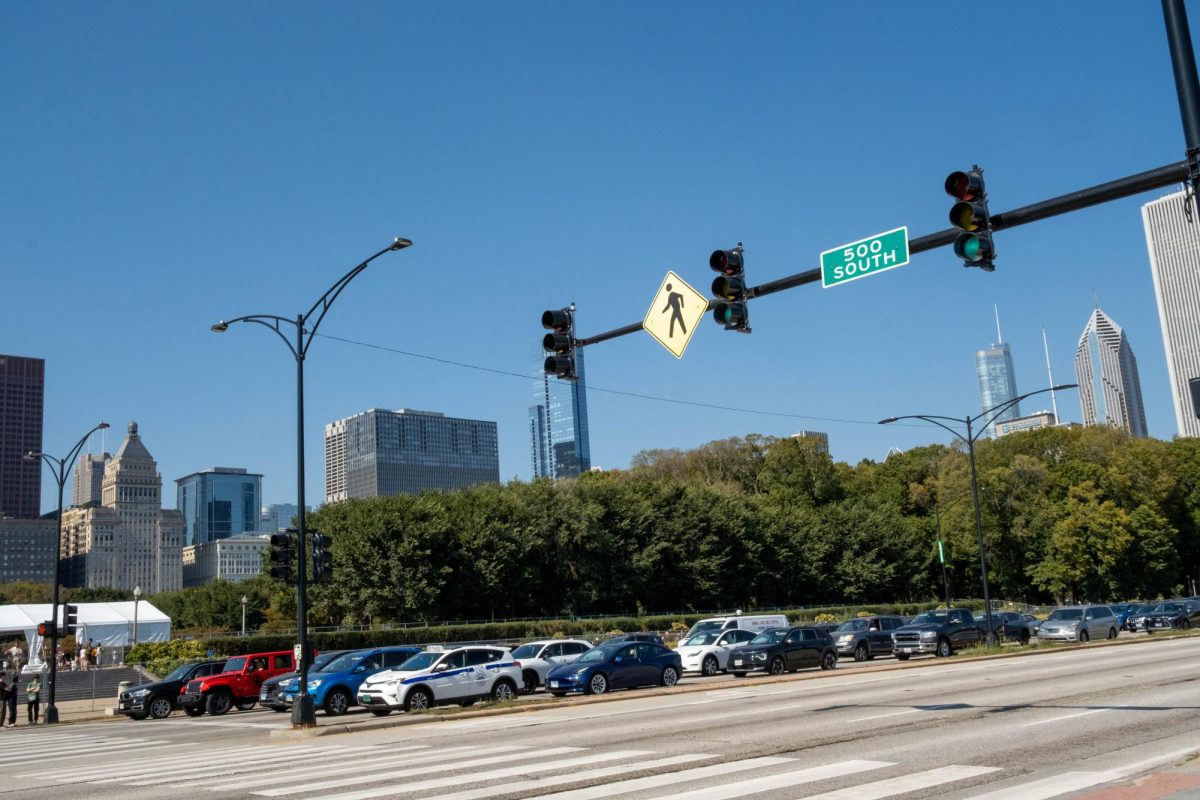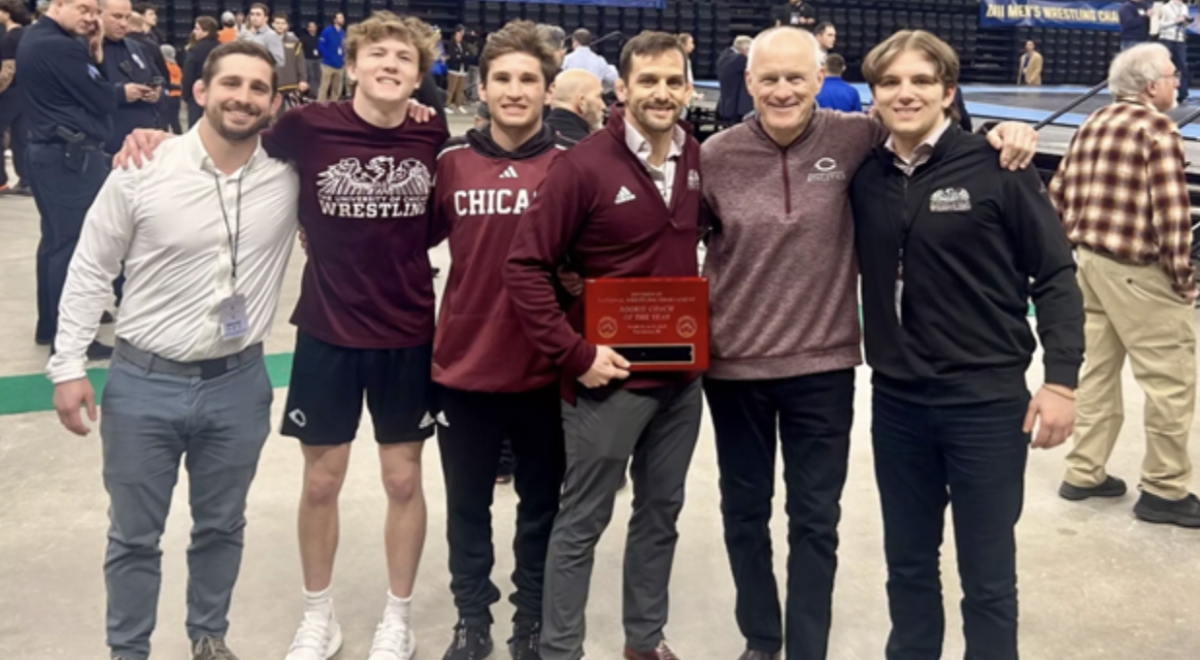This week I chose to explore the neighborhoods and parks along the lakefront south of Hyde Park. These neighborhoods are rich in history and feature some of Chicago’s most beautiful parks and views. I took to the roads this past Saturday, an ideal day for biking: 50 degrees and sunny. My plan was to head to Jackson Park, straight south to South Chicago, and then circle east to the lakefront and follow the jagged roads back north along the lake.
From campus I headed east on 56th street until its end and took the bike path straight south. Passing under the 57th Street bridge, I entered Jackson Park and rode alongside the Museum of Science and Industry (MSI), a top Chicago attraction. The MSI is the last remaining building from the World’s Columbian Exposition of 1893, also known as the Chicago World’s Fair. During the fair the MSI building was the “Palace of Fine Arts.” It is the only structure that remains of nearly 200 buildings that comprised the “White City,” which occupied Jackson Park for the year-long exposition. Following the bike path as it curves east, one gets a great view of the building reflecting over the Columbia Basin. The pillars and dome are done in the French neo-classical style of architecture that was present in all the main exposition buildings of the fair.
I followed the trail across the Clarence Darrow Bridge, named after the famous Chicago lawyer best known for defending Leopold and Loeb and for his involvement in the Scopes trial. I then took a quick left over another bridge onto the Wooded Isle, a park also built during the Columbian Exposition that sits on an island in the middle of the east and west lagoons of Jackson Park. Riding along the forested trail, for a minute I forgot I was in a congested city.
The path circles the island but I took the bridge at the south end and followed the trail up to the three-way intersection between Hayes Drive and Richardson Drive. In the middle of the roundabout stands “The Statue of the Republic,” a 24-foot-high woman, sculpted from gilded bronze. The noble figure is a replica, only a third of the size of the original statue that stood in the middle of the White City of the World’s Fair.
There is a bike path on the east side of Richards Drive that I took to the corner where Lake Shore Drive becomes Jeffery Boulevard. I crossed the street and headed south, taking the bike path on the east side of Jeffery. At 67th Street Jackson Park ends, and I continued south on Jeffery through the Jackson Park Highlands neighborhood, a predominantly African-American community. Jeffery does not have a designated bike lane, but is a wide one-lane road that accommodates cyclists. Jeffery Boulevard is a main thoroughfare sprinkled with homes, apartments, churches, commercial shops, and schools. At 71st Street the road passes over railway tracks that run down the middle of the road. Though they have been converted to be part of Metra lines, these were originally tracks for trolley cars that could be taken up and down 71st Street.
I continued south to South Chicago Avenue where I took a left onto the angled road southeast. South Chicago Avenue is a busy two-way street but features a bike lane. I took the road to 91st Street where I turned left and headed three blocks east before turning north up Commercial Avenue. At this point I was in the heart of the neighborhood of South Chicago which, since the turn of the 20th century, has been a community of immigrants. In the early 1900s, it was home to many Polish, Croatian, and Irish immigrants coming to work in the nearby U.S. Steel Mills. Over time, the demographics of the community changed, and now it has a large Hispanic population. Getting hungry, I stopped off at a Mexican Supermarket, El Guero, on Commercial near the corner of 91st. El Guero has a small taqueria inside, and serves an array of fast Mexican food. I elected to go with the steak torta, and it did not disappoint.
Refueled, I proceeded on Commercial north to 87th Street where I headed east to the corner of 87th and Burley Avenue. East of Burley between 79th and 92nd Streets sits around 700 acres of abandoned lakefront property. The site was once the home of the U.S. Steel South Works Steel Mill. It operated from 1882 before downsizing in the ’70s and closing for good in 1992. At the height of its operations, the mill employed 20,000 workers and produced the steel beams that built Chicago’s famed skyscrapers, including the John Hancock and Sears Towers.
In the empty lot on the corner of 87th and Burley there is a temporary velodrome, a track for bicycle racing. The velodrome is a part of a project called Chicago Velo Campus, which hopes to bring a state-of-the-art indoor velodrome to South Chicago and spark a large redevelopment project on the abandoned U.S. Steel land. The track has been hosting races since the summer and is open to visitors on weekends.
After taking a look at the velodrome, I headed north on Burley to 83rd Street. Taking 83rd a block west I turned north on South Shore Drive, a beautiful wooded residential street with tree cover and a bike lane. I took South Shore to 79th where I took a right and then a left a block later onto Cheltenham Place. Cheltenham winds north to Rainbow Beach Park. Rainbow Beach is one of the South Side’s most famous beaches with immaculate views of downtown. Rainbow Beach is also an important location for the Civil Rights movement in Chicago. The beach was segregated until 1961 when African-American activists staged “wade-ins” in protest, ultimately leading to the integration of the beach.
I took the trail along the water up to 75th Street where I headed a block west and continued north on South Shore Drive. At 71st Street, South Shore Drive disconnects and I picked up the beginning of the lakefront bike path. I took the path along 71st until South Shore began again. At the corner of 71st and South Shore is the South Shore Cultural Center, a beautiful building and golf course, which hosted Barack and Michelle Obama’s wedding. Once a private country club, it is now owned by the city of Chicago.
I headed back to the lakefront path and continued north to Promontory Point where I took the tunnel at 55th Street west and 55th back to campus. I hope this route serves as a reminder that there is a whole chunk of Chicago waiting to be discovered south of Hyde Park and that it features some of the city’s most scenic areas. And of course, there is no better way to see it than by bike.








